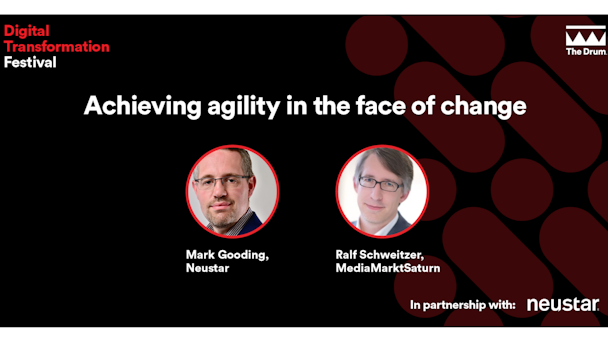Achieving agility in the face of change
One dramatic effect of the pandemic has been the sudden acceleration of trends that were already apparent before the virus hit. For some companies, it was a holt to eCommerce. Among these trends for marketers is the adoption of agile marketing.

Achieving agility in the face of change
Agile Marketing appeared on most marketers’ radar when marketers tried to codify the subject with the launch of the Agile Marketing Manifesto in 2012. A 2019 survey indicates that 50% of marketing leaders in traditional companies are looking to adopt more agile ways of working, and 32% are already on the journey. Since then, brands have found themselves having to respond to even more rapidly changing circumstances. For many, an agile approach has been the only way to improve and sustain customer experience and maintain brand loyalty.
However, there are still plenty of questions about what agile marketing actually means, how a marketing team can become agile, and what the benefits are of doing so. As part of the Digital Transformation Festival, The Drum partnered with the data and analytics authority, Neustar, to answer some of these questions.
The first – and most important – question is what we mean when we talk about agile marketing. Neustar’s head of growth, marketing solutions for EMEA and APAC, Mark Gooding, defined it as being able to adapt and pivot strategies and marketing spends intelligently.
“Agile Marketing isn’t just about speed,” he said, “although that’s part of it. But it’s also about making intelligent decisions about how to optimize your marketing spend in a more effective and efficient way.”
Gooding's co-panelist, Ralf Schweitzer, expert in marketing efficiency at the electronics retailer, MediaMarktSaturn Retail Group, put it even more bluntly: “Agility is the answer of an organization to the dynamic environment. It’s a matter of survival.”
Key takeaways
The two panelists summed up what they felt were the key points of the session. For Gooding, it was that, as well as speed, agile marketing is about focusing on linking marketing to revenue and proving that marketing can be the growth lever for the business.
For Schweitzer, the most important thing is to start taking the steps needed to become agile; as he put it: “Done is better than perfect.”
Schweitzer and Gooding also had advice about how to become agile. For both of them, it all hinges on data. Schweitzer described it as “the raw material of the new economy”, Gooding as “the fuel for better decision-making.”
“But data in itself doesn’t really do much for you,” Gooding said. “You need to apply intelligence on top, you need to apply analytics, you need to put it in a way that that makes sense to the business. What we’ve seen is when clients prioritize key business KPIs against marketing budgets, that’s what actually makes the difference; when you can link marketing to revenue.”
As Gooding explained, when companies can do this, they can start to rebalance their marketing spend to deliver against both short-term and long-term goals.
“When Covid first hit, a number of our clients were in survival mode; how do we get through the next three months? So they had to understand the true effectiveness of their performance marketing. But at the same time, they needed to look to the long term and at how they build the brand, so that they’re still around in a year’s time and still maintaining their value proposition in the market.”
Challenges and rewards
There are a number of challenges in this focus on data, as Schweitzer pointed out. First, you need to break down the silos and make sure you have all the data at your fingertips, including that coming from non-digital sources. Then you need to be able to perform your analytics and derive your insights. Only then can you put those insights into action.
“You need to make sense of the data. Then the next step is to act on it. Because if you don’t do that, then all the exercise has been in vain.”
Finally, Gooding pointed out that the time to be doing this is now, because there’s a wave of pent-up demand ready to break as lockdowns start to lift.
“Companies’ focus should be on linking marketing to revenue,” he said. “When you get that right, you put yourself in a position to make better decisions going forwards. And ultimately, the ability to take advantage of that, and use marketing as the growth lever for the business is going to be crucial. Because the winners will be the companies that place themselves in front of their customers and are top-of-mind.”
Achieving agility in the face of change panel is available on demand via The Drum's Digital Transformation Festival website. Watch it here.
Content created with:

Neustar
Neustar, Inc., a TransUnion company, is an information services and technology company and a leader in identity resolution providing the data and technology that...
Find out more